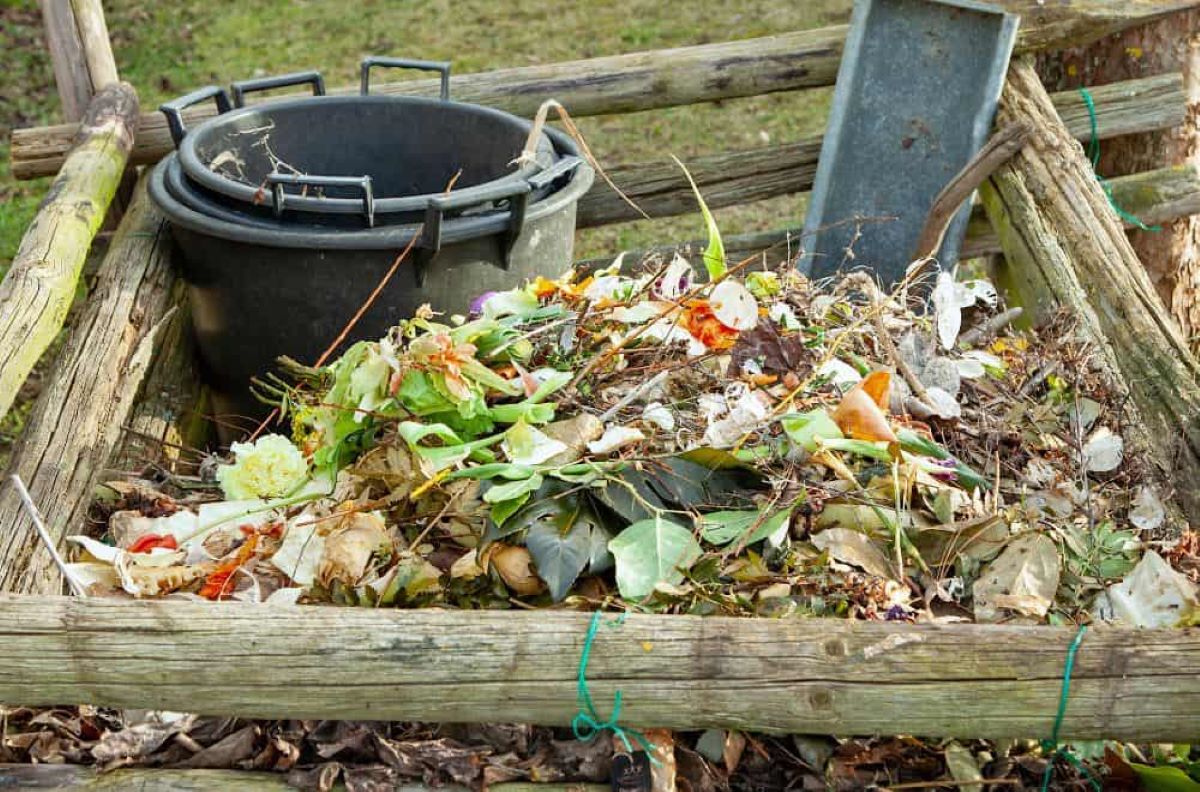Home>Gardening Basics>Getting Started>How Long Does It Take For 2,4-D To Kill Weeds


Getting Started
How Long Does It Take For 2,4-D To Kill Weeds
Modified: January 22, 2024
Learn how long it takes for 2,4-D to effectively kill weeds and get started on your weed control journey. Discover the best practices for getting rid of weeds with 2,4-D.
(Many of the links in this article redirect to a specific reviewed product. Your purchase of these products through affiliate links helps to generate commission for Chicagolandgardening.com, at no extra cost. Learn more)
Table of Contents
Introduction
Introduction
When it comes to maintaining a lush and healthy lawn or garden, unwanted weeds can quickly become a persistent nuisance. Fortunately, there are effective herbicides available to combat these unwelcome intruders, with 2,4-D being a popular and widely used option. Understanding the process and timeline of how 2,4-D works to eliminate weeds is crucial for achieving successful results in weed control.
The efficacy of 2,4-D in eradicating weeds is influenced by various factors, including the type of weeds, application methods, timing, and environmental conditions. By delving into the intricacies of 2,4-D and its interaction with weeds, we can gain valuable insights into the optimal practices for weed management. This article aims to explore the fundamental aspects of 2,4-D and provide a comprehensive understanding of how long it takes for this herbicide to eliminate weeds effectively. Let's delve into the world of 2,4-D and uncover the essential details that every gardener and lawn enthusiast should know.
What is 2,4-D?
What is 2,4-D?
2,4-Dichlorophenoxyacetic acid, commonly known as 2,4-D, is a potent synthetic herbicide that has been widely utilized for decades to control broadleaf weeds. It belongs to the phenoxy herbicide group and is renowned for its effectiveness in targeting an extensive array of broadleaf weeds while leaving grasses largely unharmed. This selective herbicide is available in various formulations, including liquid concentrates, ready-to-use sprays, and granules, catering to different application needs.
2,4-D works by mimicking the action of auxins, which are plant hormones responsible for regulating growth and development. When applied to weeds, 2,4-D disrupts the normal growth processes, leading to uncontrolled and abnormal growth, ultimately resulting in the demise of the targeted weeds. One of the key attributes of 2,4-D is its ability to be absorbed through the leaves of plants, making it an effective foliar spray for weed control.
This herbicide is commonly employed in agricultural settings, residential lawns, golf courses, and other turf areas to combat an array of broadleaf weeds such as dandelions, clover, plantain, and thistles. Its versatility and efficacy have cemented its status as a staple herbicide in the arsenal of weed management strategies.
Factors Affecting 2,4-D Efficacy
The efficacy of 2,4-D in eliminating weeds is influenced by several crucial factors that play a pivotal role in determining the success of weed control efforts. Understanding these factors is instrumental in optimizing the application of 2,4-D for maximum effectiveness.
- Weed Species: Different weed species exhibit varying degrees of susceptibility to 2,4-D. While this herbicide is effective against a broad spectrum of broadleaf weeds, some species may require higher concentrations or repeated applications for successful eradication.
- Growth Stage of Weeds: The growth stage of the targeted weeds significantly impacts the efficacy of 2,4-D. For optimal results, it is advisable to apply 2,4-D when the weeds are actively growing and have not yet reached maturity. Younger, actively growing weeds are more responsive to herbicidal treatments.
- Environmental Conditions: Weather and environmental factors such as temperature, humidity, and rainfall can influence the performance of 2,4-D. Ideal conditions for application include moderate temperatures and minimal wind to ensure proper herbicide adherence and absorption by the weeds.
- Application Rate and Timing: The correct application rate and timing are critical for maximizing the efficacy of 2,4-D. Applying the herbicide at the recommended rates and during the appropriate growth stages of the weeds is essential for achieving optimal control.
- Adjuvants and Formulations: The use of adjuvants and the selection of specific formulations can impact the performance of 2,4-D. Adjuvants can enhance herbicide activity, while different formulations may offer varying degrees of efficacy for specific application needs.
By taking these factors into consideration and tailoring the application of 2,4-D to suit specific weed species and environmental conditions, the efficacy of this herbicide can be maximized, leading to successful weed control outcomes. It is essential to assess these factors meticulously to ensure the optimal utilization of 2,4-D for effective weed management.
Application Methods and Timing
The effectiveness of 2,4-D in eradicating weeds is intricately linked to the application methods and timing employed during the weed control process. Utilizing the appropriate application techniques and timing the herbicidal treatments correctly are pivotal in achieving desirable outcomes in weed management.
Common application methods for 2,4-D include foliar spraying, spot treatments, and broadcast applications. Foliar spraying, which involves applying the herbicide directly to the leaves of the weeds, is a widely utilized method due to its efficacy in targeting broadleaf weeds while minimizing impact on grasses. Spot treatments are ideal for addressing localized weed infestations, while broadcast applications are suitable for larger areas with widespread weed growth.
Timing plays a critical role in the success of 2,4-D applications. It is recommended to apply 2,4-D when weeds are actively growing and have not yet reached maturity. This ensures that the weeds are more receptive to the herbicidal treatment, enhancing the overall efficacy of 2,4-D. Additionally, avoiding application during periods of extreme temperature or drought can help optimize the herbicide’s performance.
Understanding the growth stages of the targeted weeds is essential for determining the most opportune time for 2,4-D application. Early spring and early fall are often considered optimal periods for herbicidal treatments, as weeds are typically actively growing during these times. However, specific weed species and regional climate patterns may influence the ideal timing for 2,4-D applications, necessitating a tailored approach based on local conditions.
By employing the appropriate application methods and timing the herbicide application to coincide with the growth stages of the weeds, the efficacy of 2,4-D can be maximized, leading to successful weed control and a healthier, more vibrant lawn or garden.
Environmental Considerations
When utilizing 2,4-D for weed control, it is imperative to consider the environmental implications and adopt practices that minimize potential risks to non-target organisms and ecosystems. By incorporating environmentally conscious approaches, the efficacy of 2,4-D can be optimized while promoting ecological sustainability.
One crucial environmental consideration is the potential for off-target movement of 2,4-D through drift or runoff. To mitigate these risks, it is essential to adhere to application best practices, including using appropriate spray nozzles to minimize drift and avoiding application during windy conditions. Additionally, maintaining buffer zones between treated areas and sensitive habitats such as water bodies is essential for preventing herbicide runoff and protecting aquatic ecosystems.
Furthermore, being mindful of wildlife habitats and nesting areas is paramount when applying 2,4-D, as the herbicide’s usage should not pose harm to beneficial organisms such as pollinators and other non-target wildlife. Selective application methods and targeted treatments can help minimize unintended impacts on beneficial insects and wildlife populations.
Considering the potential effects on human health is also integral to responsible 2,4-D usage. Practicing proper personal protective equipment (PPE) usage during herbicide application and adhering to safety guidelines can safeguard applicators and bystanders from unnecessary exposure. Additionally, communicating and posting application notices in treated areas can help raise awareness and promote safety precautions.
Moreover, adopting integrated weed management practices that encompass a holistic approach to weed control, including cultural, mechanical, and biological methods, alongside herbicidal treatments, can contribute to sustainable weed management while reducing reliance on chemical interventions.
By prioritizing environmental considerations and embracing ecologically mindful practices, the efficacy of 2,4-D can be harmonized with environmental stewardship, fostering a balanced approach to weed control that aligns with sustainable and responsible environmental management principles.
Conclusion
As we conclude our exploration of 2,4-D and its efficacy in weed control, it is evident that this potent herbicide offers a valuable tool for managing broadleaf weeds in various settings, from agricultural landscapes to residential lawns. The multifaceted nature of 2,4-D’s effectiveness is underscored by the interplay of factors such as weed species, growth stages, environmental conditions, application methods, and timing, all of which significantly influence the herbicide’s performance.
Understanding the intricacies of 2,4-D and its interaction with weeds empowers practitioners and enthusiasts to make informed decisions regarding weed management strategies. By carefully considering the factors that impact 2,4-D efficacy and embracing environmentally conscious practices, the potential of this herbicide can be harnessed to achieve successful weed control outcomes while minimizing adverse impacts on non-target organisms and ecosystems.
Ultimately, the comprehensive understanding of 2,4-D and its optimal utilization in weed control endeavors contributes to the cultivation of vibrant, healthy landscapes and environments. As stewards of our outdoor spaces, integrating responsible herbicide usage with ecologically mindful practices paves the way for sustainable weed management and the preservation of biodiversity, ensuring that our lawns, gardens, and agricultural lands thrive in harmony with nature.




